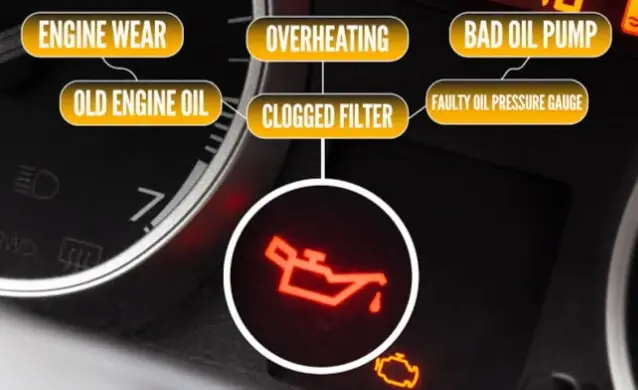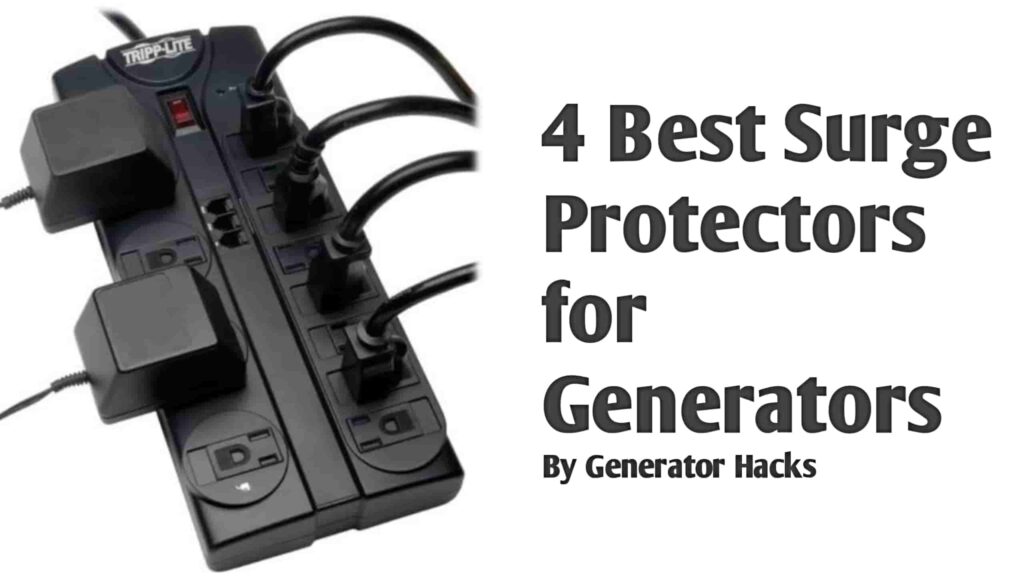As an Amazon Associate, we earn from qualifying purchases. This does not affect the price you pay or the quality of the products you buy. For more information, please read the full affiliate disclosure here.
Let’s imagine you’re driving down the road and notice a warning light flickering on your dashboard – the oil pressure gauge. The needle is steadily climbing, which can be a cause for concern.
The oil pressure gauge is a vital indicator of your engine’s health. It measures the pressure of the oil circulating throughout the system. Engine oil acts as a lubricant, reducing friction between moving parts and preventing them from grinding against each other. Without proper oil pressure, these parts can overheat, wear down quickly, and even seize completely, leading to a breakdown.
Maintaining healthy oil pressure is important for both vehicles and generators. Regardless of whether you’re using your car for daily commutes or your generator for backup power, ensuring optimal oil pressure guarantees smooth operation and extends the engine’s lifespan.
Understanding High Oil Pressure in Engines
Ideal oil pressure levels vary depending on the specific engine. Every vehicle and generator manufacturer will have recommended oil pressure ranges in their owner’s manual or service guides. These ranges consider factors like engine size, type, and operating conditions (cold starts vs. highway driving).
For reference, oil pressure readings above 80 psi (pounds per square inch) are often considered a cause for concern, especially if they occur consistently. However, it’s important to consult your vehicle’s or generator’s manual for the specific range you should be aiming for.
The oil pressure gauge is a simple but crucial instrument on your dashboard (in vehicles) or control panel (in generators). It typically consists of a needle and a dial labeled with various pressure ranges (psi or bar). As the engine runs, the oil pump pressurizes the oil, and the gauge reflects that pressure with the needle’s position.
By monitoring the oil pressure gauge, you can get a quick sense of whether the oil is circulating properly within your engine. Normally, the oil pressure will fluctuate slightly depending on the engine RPMs. However, it should remain within the manufacturer’s recommended range for your specific vehicle or generator model.
ALSO READ: Oil Pressure Gauge Drops to Zero Then Goes Back Up: What Does It Mean and How to Fix It?
Common Causes of High Oil Pressure
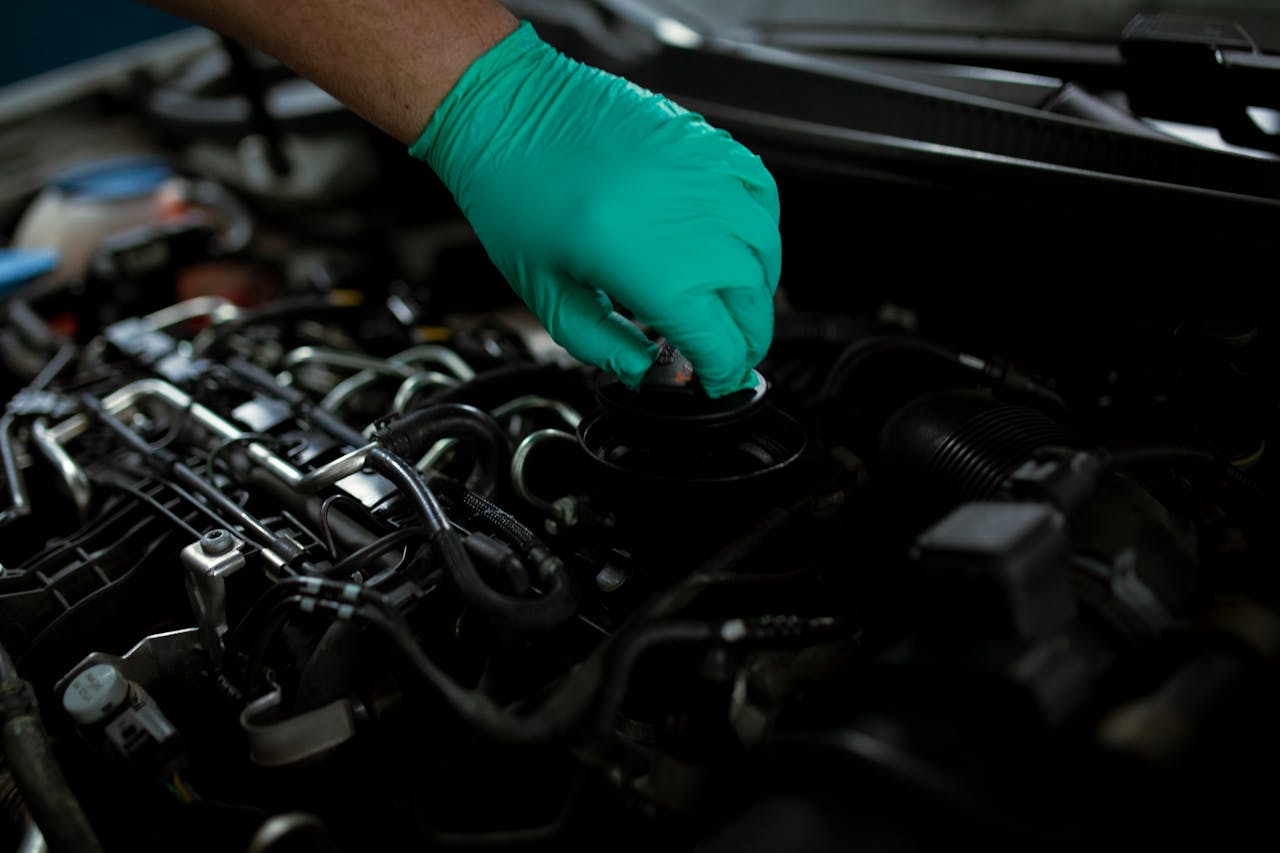
High oil pressure can occur in both vehicles and generators due to a variety of reasons, including.
1. Incorrect Oil Grade
Engine oil comes in various viscosity grades, which refer to the oil’s thickness or resistance to flow. Thicker oils (higher viscosity grades) are better suited for hot weather or high-performance engines, while thinner oils (lower viscosity grades) are preferable for cold climates or everyday driving.
The oil viscosity grade recommended by your vehicle or generator’s manufacturer is carefully chosen to ensure optimal performance and protection. Using oil that’s too thick for your engine’s needs creates resistance as it flows through the narrow passages within the engine block and cylinder head.
This resistance makes it harder for the oil pump to circulate oil efficiently, and the increased effort translates to higher oil pressure on the gauge. Conversely, using oil that’s too thin may not provide adequate lubrication for all engine components, especially during hot weather or demanding driving conditions.
2. Clogged Oil Filter
The oil filter is a replaceable component designed to capture contaminants from the engine oil as it circulates throughout the engine. These contaminants can include wear particles from engine components like bearings and piston rings, as well as dirt, soot, and other debris that enter the engine through the air intake system or during oil changes if proper procedures are not followed. By trapping these contaminants, the oil filter helps to maintain the cleanliness and lubricating properties of the engine oil. A clogged oil filter, however, restricts the flow of oil through the engine lubrication system. This restriction can cause the oil pressure gauge to read higher than normal.
3. Contaminated Oil
External contaminants can enter the engine oil and mix with it, altering its lubricating properties and increasing pressure. This contamination can happen in a few ways. Leaking gaskets or seals around the engine cooler can allow engine coolant (typically water-based) to seep into the oil passages. Similarly, a faulty head gasket can cause coolant to breach the cylinder head and contaminate the oil.
In some cases, condensation within the engine crankcase can also contribute to water contamination, especially in vehicles or generators that make frequent short trips or experience extended periods of idling. Fuel contamination can occur due to worn piston rings or injector issues that allow unburnt fuel to leak into the oil crankcase. This is more common in diesel engines but can also happen in gasoline engines.
4. Worn Engine Bearings
Engine bearings are precision-machined components typically made of a layered composite material with strong metal backing and a smoother bearing surface. They are situated at various locations within the engine block and cylinder head to provide a low-friction interface between moving parts. The crankshaft, connecting rods, and camshaft all rotate within bearings that minimize friction and allow for smooth operation. Over time, however, these bearings wear down due to constant friction and pressure. As the bearing material degrades, the clearance between the moving parts and the bearings increases. This increased clearance creates more space for oil to flow through, but it also reduces the effectiveness of the oil film in separating these parts. Consequently, friction rises within the engine, and the oil pump needs to work harder to circulate oil throughout the system at sufficient pressure to compensate for the inefficiencies caused by worn bearings. This increased effort by the oil pump manifests as higher oil pressure readings on the gauge.
5. Sticking Pressure Relief Valve
The pressure relief valve is a crucial safety component within the engine’s lubrication system. It acts as a sort of pressure regulator, ensuring that oil pressure stays within safe operating limits. The valve is typically a spring-loaded mechanism that remains closed during normal engine operation. As oil pressure builds within the system, it pushes against the valve spring. Once the pressure reaches a predetermined threshold set by the valve’s design and spring tension, the valve opens, diverting excess oil flow back to the engine crankcase. This bypass mechanism prevents oil pressure from exceeding safe limits that could damage engine components. However, if the pressure relief valve malfunctions and sticks closed, it can no longer perform its regulatory role. Oil pressure will continue to rise unchecked within the lubrication system, potentially leading to serious engine damage.
6. Blocked Oil Passages
Similar to a clogged filter, a buildup of debris or sludge within the engine’s narrow oil passages can significantly hinder oil flow. This debris can come from various sources. Over time, engine components wear down, generating microscopic particles that circulate in the oil. If oil changes are not performed at recommended intervals, these particles can accumulate and settle within the engine block and cylinder head, eventually clogging the fine oil passages.
In addition, degraded engine components, such as worn bearings or piston rings, can shed small metal shavings or other debris that contribute to the overall sludge buildup. In rare cases, external contaminants like coolant or dirt may also enter the engine oil and solidify within the passages, restricting oil flow.
7. Overfilling the Engine with Oil
Exceeding the recommended oil fill capacity can have unintended consequences. The engine crankcase is designed to hold a specific amount of oil to ensure proper lubrication and circulation. Adding too much oil creates a churning effect as the crankshaft rotates within the crankcase. This churning can cause the excess oil to foam and create unwanted resistance within the lubrication system. The oil pump, unable to circulate the excessive volume efficiently, has to work harder to maintain pressure, leading to higher oil pressure readings on the gauge.
8. Engine Overheating
Engine overheating presents a unique challenge to the lubrication system. Extreme heat can cause the oil to break down and become thinner, reducing its viscosity. While it might seem logical that thinner oil would flow more easily, the problem lies in its ability to lubricate. Thin oil cannot form a sufficiently thick film between moving parts, leading to increased friction within the engine. To compensate for this loss of lubrication and maintain a protective oil film, the oil pump needs to increase pressure. This translates to higher oil pressure readings on the gauge, even though the oil itself is thinner than normal.
ALSO READ: Does oil pressure increase with RPM? Find out the truth
Symptoms of High Oil Pressure
When oil pressure exceeds the manufacturer’s recommended range for a particular engine, it can be an indicator of potential problems. Here are some key symptoms to watch out for that might indicate high oil pressure in your vehicle or generator:
1. Engine Noises
Unusual engine noises are a common warning sign that something might be amiss within the engine. In the case of high oil pressure, you might hear abnormal knocking or ticking sounds coming from the engine. These noises can be caused by a couple of factors. One possibility is increased friction between engine components. Although oil is present, the excessive pressure might prevent the oil from forming a sufficiently thick lubricating film between moving parts. This can lead to metal-to-metal contact, resulting in knocking or ticking sounds. Another possibility is that the high pressure itself could be causing certain components to cavitate, creating rattling or ticking noises.
2. Oil Leaks
The engine’s lubrication system relies on a network of seals and gaskets to keep oil contained within designated passages. These seals are designed to withstand normal operating pressure. However, high oil pressure can put additional stress on these seals and gaskets, exceeding their capacity and potentially causing them to leak. Leaking oil is not only a mess but also a sign of a potential internal issue that requires attention. If you notice any fresh oil leaks around the engine block, cylinder head, or oil pan, it’s crucial to have the vehicle or generator inspected by a qualified mechanic or technician to determine the cause and address the leak.
3. Warning Lights on the Dashboard (Vehicles)
Most modern vehicles are equipped with an oil pressure gauge on the dashboard. This gauge provides a real-time reading of the oil pressure within the engine. The gauge typically has a designated normal operating range marked on its dial. If the oil pressure gauge needle consistently climbs above this normal range or triggers a dedicated oil pressure warning light, it’s a clear indication that something is wrong. Don’t ignore these warnings; address the issue promptly to avoid further damage. Consulting your vehicle’s owner’s manual can provide specific details on what the oil pressure gauge readings or warning lights signify.
4. Decreased Engine Performance
In some cases, high oil pressure can lead to a decrease in overall engine performance. This can manifest in several ways, such as a noticeable loss of power during acceleration, hesitation when pressing the gas pedal, or rough idling. There are a couple of reasons why this might occur. One reason is that excessive pressure within the lubrication system can lead to increased resistance as engine components move. This resistance can act like a drag on the engine, sapping power output. Another reason is that if the high pressure is caused by a restricted oil passage somewhere within the engine, certain components might not be receiving adequate lubrication, leading to inefficiencies and power loss.
ALSO READ: What is the Normal Engine Oil Temperature and How do you Keep it in Check?
Dangers of High Oil Pressure (if not addressed)
When oil pressure exceeds the recommended limits, it can lead to a cascade of problems if left unaddressed. Here’s a breakdown of the potential dangers associated with high oil pressure:
1. Accelerated Engine Wear and Tear
High oil pressure disrupts the delicate balance within the engine’s lubrication system. The excessive pressure can prevent the oil from forming a proper lubricating film between moving parts. This lack of adequate lubrication exposes these components to increased friction and wear. Over time, this wear can manifest as increased engine noise, performance degradation, and a shortened lifespan for various engine components.
2. Component Damage
The relentless force of high oil pressure can wreak havoc on internal engine components. Strained seals and gaskets throughout the engine lubrication system are particularly vulnerable. These seals are designed to withstand normal operating pressure, but the excessive force exerted by high oil pressure can cause them to fail, leading to oil leaks. Furthermore, high pressure can damage bearings within the engine. Bearings provide low-friction interfaces between moving parts like the crankshaft and connecting rods. If the oil pressure becomes too high, it can compromise the integrity of the bearing material, potentially leading to bearing failure and catastrophic engine damage.
3. Engine Seizure (Worst-Case Scenario)
In the most severe cases of high oil pressure, the engine can seize entirely. This can happen if critical components, such as bearings, experience complete lubrication failure due to excessive pressure or blockage. Without proper lubrication, these components can bind and seize, bringing the engine to a grinding halt. Engine seizure is a major mechanical failure requiring a complete engine rebuild or replacement, resulting in significant repair costs and downtime.
ALSO READ: Overfilling Engine Oil Symptoms: What You Need to Know
Troubleshooting High Oil Pressure
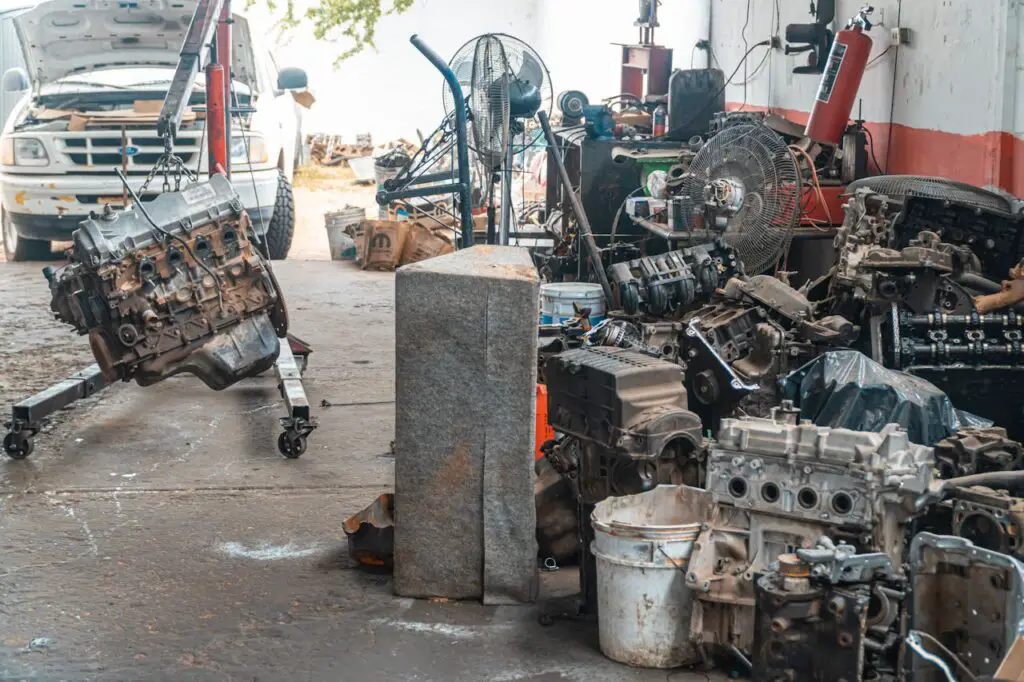
If you suspect your vehicle or generator might be experiencing high oil pressure, it’s crucial to address the issue promptly to prevent potential damage. Here are some initial troubleshooting steps you can take:
1. Check the Oil Level and Condition
The first step is to verify your engine’s oil level. Consult your vehicle or generator’s owner’s manual to locate the dipstick and proper oil level check procedures. If the oil level is low, adding oil to bring it back to the recommended level might resolve the issue if low oil was the problem. However, keep in mind that simply adding oil is a temporary fix. It’s important to determine why the oil level was low in the first place. There could be a leak somewhere in the system that needs to be addressed.
While checking the oil level, take a moment to assess the oil’s condition. Clean engine oil is typically a light amber color. If the oil appears dark brown or black and feels gritty to the touch, it’s likely dirty and due for a change. Using dirty oil can contribute to restricted oil flow and potentially lead to high oil pressure.
2. Inspect the Oil Filter
The oil filter plays a vital role in capturing contaminants within the engine oil. A clogged oil filter can restrict oil flow and contribute to high pressure readings. Locate the oil filter on your engine or generator (refer to your owner’s manual for specific instructions). Visually inspect the filter for any signs of damage or leaks. If the filter appears dirty or swollen, it’s best to replace it with a fresh, high-quality filter recommended by your vehicle or generator manufacturer.
3. Consult Your Owner’s Manual
Your vehicle or generator’s owner’s manual is a valuable resource when troubleshooting any issue, including high oil pressure. The manual will provide specific details on recommended oil types, oil capacities, and potential causes for abnormal oil pressure readings. The manual might also outline additional troubleshooting steps you can take or recommend using a manual oil pressure gauge (separate from the dashboard gauge) for a more precise pressure reading.
Solutions for High Oil Pressure
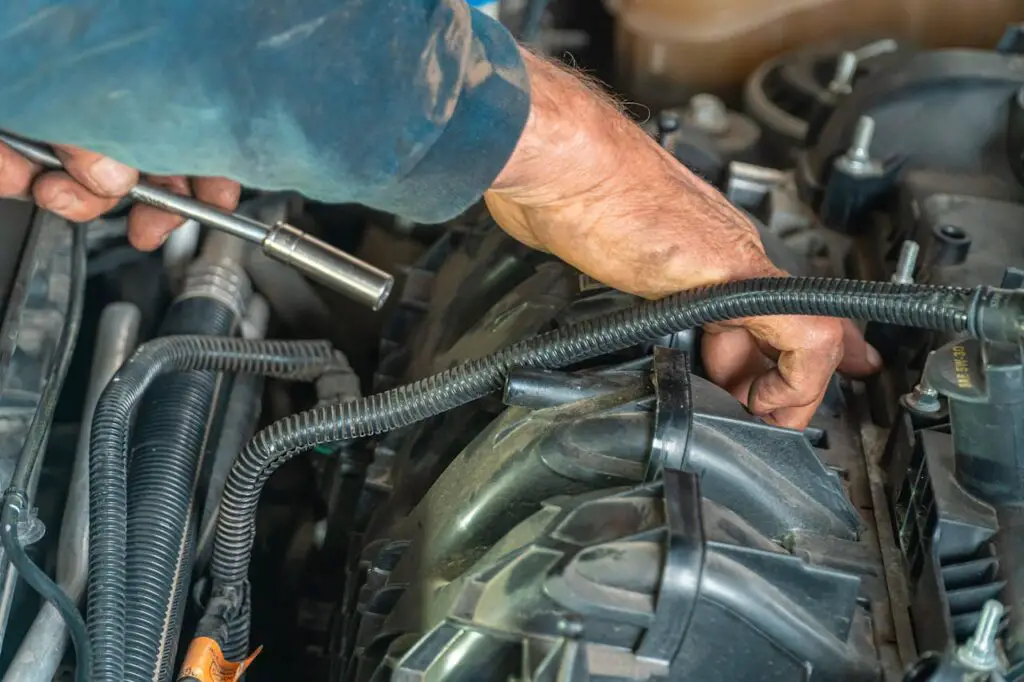
1. Oil Change and Filter Replacement
Often, the simplest solution for high oil pressure is a fresh oil change and a new oil filter. By following the manufacturer’s recommended oil type and viscosity grade for your specific vehicle or generator, you ensure optimal lubrication performance. Dirty oil or oil with the wrong viscosity can contribute to restricted flow and high pressure. Replacing the oil filter eliminates any potential blockage that might be hindering oil circulation. Using high-quality oil and filters recommended by your vehicle or generator manufacturer is crucial for maintaining a healthy lubrication system.
2. Seek Professional Help for Persistent Issues
If the high oil pressure persists after a proper oil change and filter replacement, it’s best to consult a qualified mechanic or generator specialist. These professionals possess the expertise and tools necessary to diagnose the root cause of the problem. They can perform a comprehensive inspection of your engine’s lubrication system, including checking for worn components, blocked oil passages, or a faulty pressure relief valve. Once the issue is identified, they can recommend the appropriate repairs to restore normal oil pressure and ensure your engine continues to operate smoothly and efficiently.
Prevention Tips for Maintaining Healthy Oil Pressure
Preventing high oil pressure from occurring in the first place is beneficial for both vehicle and generator owners. Here are some key preventative measures you can take:
1. Regular Oil Changes
The Cornerstone of Engine Health One of the most effective ways to maintain healthy oil pressure is by adhering to the recommended oil change intervals specified in your vehicle or generator’s owner’s manual. Think of fresh oil as the lifeblood of your engine’s lubrication system. Regular oil changes ensure optimal lubrication performance and minimize friction within the engine. Over time, oil degrades and becomes less effective at lubricating components, like worn gears or pistons. Oil changes remove contaminants and wear particles that can accumulate within the engine, preventing them from clogging oil passages and contributing to pressure issues. Following a consistent oil change routine is the cornerstone of preventative maintenance for your engine’s lubrication system.
2. Choosing the Right Oil Grade
Using the Manufacturer’s Recipe Using the correct oil grade for your engine is crucial, just like using the right ingredients in a recipe. Oil viscosity, indicated by a grade like “5W-30” or “10W-40,” represents the oil’s thickness at different temperatures. The manufacturer recommends a specific oil grade based on your vehicle or generator’s climate and operating conditions. Imagine using thick honey in cold weather – it would be difficult to pump! Similarly, oil that’s too thick for cold weather can cause sluggish flow during startup, while oil that’s too thin for hot weather might not provide adequate lubrication, like using water instead of oil in your engine. Both scenarios can contribute to abnormal oil pressure readings. Consult your owner’s manual to ensure you’re using the recommended oil grade, following the manufacturer’s recipe for optimal engine performance.
3. Maintain Engine Cleanliness
Starving Sludge Buildup Regular engine cleaning can help prevent sludge buildup within the engine block and cylinder head. Sludge can accumulate from various sources, including unburnt fuel residue, engine wear particles, and oxidized oil. Think of sludge as the foe of healthy oil flow. This sludge can restrict oil flow through narrow passages and potentially contribute to high oil pressure. Regularly cleaning your engine’s exterior and following a proper maintenance schedule that includes air filter changes can help minimize the accumulation of dirt and debris within the engine, promoting a cleaner and potentially more efficient lubrication system.
4. Monitor Your Oil Pressure Gauge
Be Proactive, Not Reactive Don’t wait for a warning light to alert you to potential problems. Make it a habit to glance at your oil pressure gauge regularly while driving or operating your generator. Familiarize yourself with the normal operating range for your specific vehicle or generator model (refer to your owner’s manual). Noticing a consistent deviation from the normal range is a good indication that something might be amiss and warrants further investigation. Early detection of abnormal oil pressure allows you to address the issue promptly before it leads to more serious problems, acting proactively instead of reactively to potential engine troubles.
ALSO READ: Generator Repair Cost Estimation: How Much Does it Cost to Repair Generator?
Frequently Asked Questions
My oil pressure gauge fluctuates slightly. Is this normal?
Yes, slight fluctuations in oil pressure gauge readings are normal, especially during engine startup or when RPMs change. However, if the needle consistently climbs above the recommended operating range or dips below it significantly, that’s a cause for concern.
I just changed my oil and filter, but the oil pressure is still high. What could be the problem?
There are several possibilities. One reason could be using the wrong oil viscosity grade. Another possibility is a malfunctioning pressure relief valve or blocked oil passages within the engine. Consulting a mechanic for further diagnosis is recommended.
Are there any risks associated with using thicker oil (higher viscosity) to try and fix high oil pressure?
Yes, using oil that’s too thick for your engine can be counterproductive. While thicker oil might seem like it would provide more pressure, it can create resistance during startup, especially in cold weather, potentially leading to increased wear on engine components. Always rely on the oil grade recommended by your vehicle or generator manufacturer.
Final Thought
Maintaining proper oil pressure is crucial for optimal engine performance and longevity. Oil pressure ensures adequate lubrication of moving parts within the engine, reducing friction and wear. If oil pressure deviates from the manufacturer’s recommended range, it can lead to a number of potential consequences, including accelerated engine wear, component damage, and in severe cases, engine seizure. These repairs can be expensive and time-prohibitive.
Fortunately, preventive maintenance practices can significantly reduce the likelihood of encountering high oil pressure issues. Regular oil changes using the oil grade specified by the manufacturer, keeping the engine clean, and monitoring oil pressure gauge readings are all straightforward yet effective measures that can contribute to a healthy lubrication system.
Early detection is key! If you suspect your vehicle or generator might be experiencing high oil pressure, consulting a qualified mechanic or generator specialist is recommended for prompt diagnosis and repair. Taking timely action can help prevent potential engine damage and ensure your vehicle or generator continues to function properly.
Share
